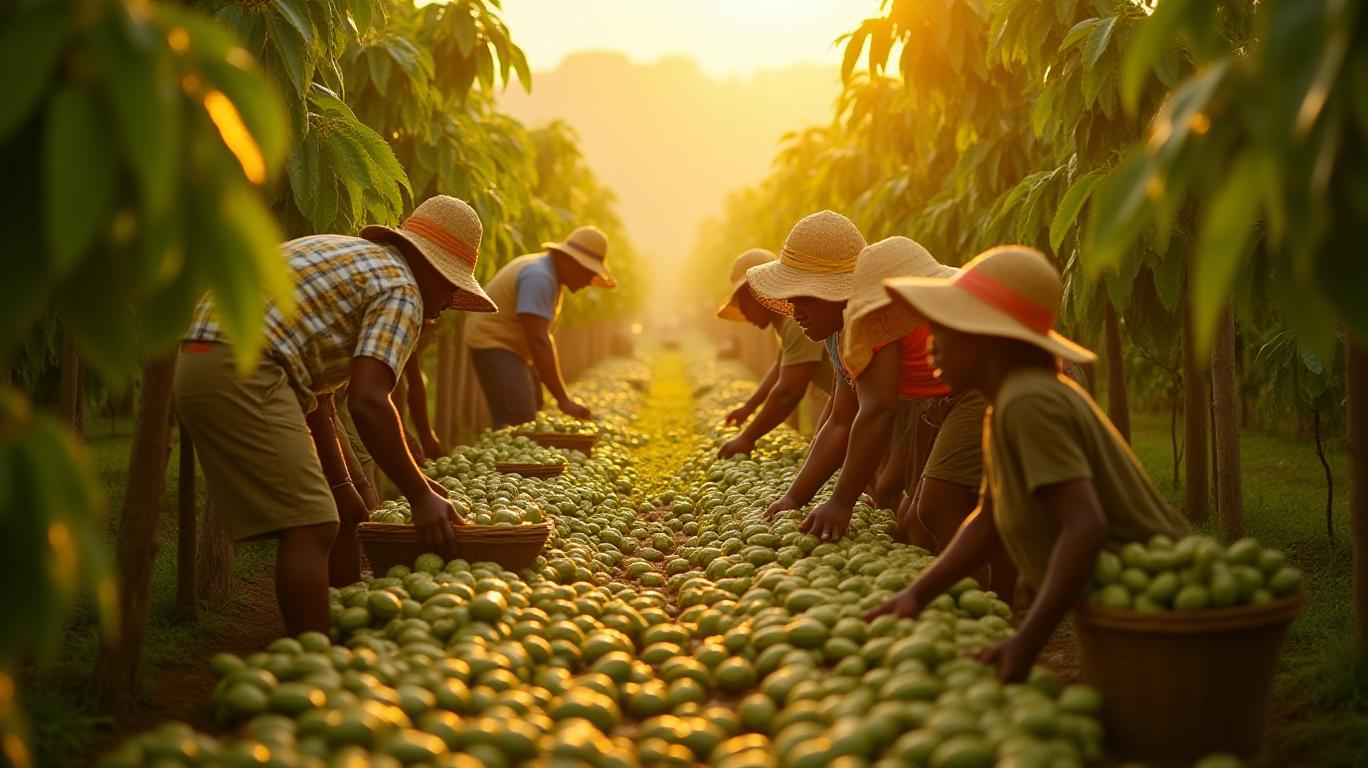Ghana’s Early Cocoa Harvest Strategy: A Bold Move to Transform the Cocoa Economy
Ghana, the world’s second-largest cocoa producer, has announced a radical shift in its cocoa sector: the 2025 harvest will begin two months earlier than usual. This strategic decision, spearheaded by the Ghana Cocoa Board (COCOBOD), aims to curb smuggling, boost domestic processing, and stabilize farmer incomes amid a sector in crisis. The move reflects a broader push to transform Ghana’s cocoa economy from a raw-bean exporter to a value-added powerhouse.

The Cocoa Crisis: Why the Early Harvest Matters
Ghana’s cocoa sector faces existential challenges. A $1.3 billion shortfall in funding for advanced contracts, declining production volumes (projected to fall to 617,500 metric tonnes in the 2024/2025 season), and underutilized processing capacity (operating below 50% of 504,780 tonnes capacity) have strained the economy. COCOBOD CEO Dr. Randy Abbey emphasized that the early harvest is a “strategic pivot” to address these issues.
The decision to accelerate the harvest aligns with two critical goals:
1. Reduce smuggling to neighboring countries: Ghana has lost millions of cocoa beans annually to smuggling, particularly to Ivory Coast, due to price disparities and delayed payments to farmers.
2. Boost domestic processing: By aligning harvest timing with local processing needs, Ghana aims to capitalize on its underused facilities and shift exports toward value-added products like chocolate, beverages, and cosmetics.
How the Early Harvest Could Stabilize the Sector
The strategy hinges on three interconnected levers:
1. Smuggling Mitigation
Smuggling thrives on timing mismatches. When Ghanaian farmers delay harvesting, they often sell beans to cross-border traders for immediate cash, bypassing regulated markets. Starting the harvest earlier could synchronize supply with domestic buyers, reducing the incentive to smuggle.
Analysis: Cocoa prices have fluctuated between $2,000–$3,000/tonne in 2024, but Ghana’s farmgate price rose to $3,104/tonne in September 2024. Aligning the harvest with peak global prices could incentivize farmers to sell locally.
2. Domestic Processing Gains
Ghana’s processing capacity remains underutilized, a problem the early harvest could resolve. By ensuring fresh cocoa beans flow into factories sooner, COCOBOD aims to lift processing volumes. For instance, if factories operate at 70% capacity instead of 40%, they could process an additional 151,434 tonnes annually, creating jobs and tax revenue.
3. Farmer Income Stability
Farmers often face delayed payments due to backlogs in global contracts. An earlier harvest could shorten the payment cycle, especially if paired with COCOBOD’s pledge to prioritize local buyers. However, skepticism remains: farmers have yet to see promised GHC 6,000/bag payments, a gap that could undermine trust.
Risks and Challenges
The strategy faces headwinds:
- Climate Volatility: Ghana’s cocoa output has dropped 20% in three years due to pests and climate shocks like El Niño. An early harvest might clash with unpredictable weather patterns.
- Global Market Pressures: The EU Deforestation Regulation (EUDR) demands traceable, sustainable sourcing. Ghana must prove compliance to avoid trade barriers.
- Processing Capacity Gaps: Even with an early harvest, inadequate infrastructure could limit gains.
Investment Implications
The early harvest opens opportunities for investors:
1. Cocoa Futures and Commodities
Investors might bet on cocoa prices rising if Ghana’s strategy tightens global supply. However, shows stagnation despite price hikes, signaling risks tied to production shortfalls.
2. Ghanaian Agro-Processing Firms
Companies like Golden Star Cocoa Processors or Cocotex could benefit from higher domestic demand. Investors should monitor their capacity utilization and government partnerships.
3. Climate Resilience Tech
Startups offering drought-resistant cocoa hybrids or agroforestry tools (e.g., Dynamic Agroforestry systems) may attract funding as Ghana seeks climate-proof production.
Conclusion: A High-Reward, High-Risk Gamble
Ghana’s early harvest is a bold response to systemic crises. If executed well, it could:
- Reduce smuggling losses by 20–30%, recovering an estimated $200–$300 million annually.
- Lift processing capacity to 60% by 2026, adding $300 million to GDP via value-added exports.
- Stabilize farmer incomes, easing the $1.3 billion contract shortfall.
However, success hinges on resolving longstanding issues: delayed payments, climate adaptation, and regulatory compliance. Investors should pair optimism with caution, tracking metrics like cocoa export volumes, factory utilization rates, and EUDR compliance progress. For now, Ghana’s gamble signals a critical pivot—one that could redefine the global cocoa landscape.
Final data point: Ghana aims to surpass 800,000 tonnes in the 2025/2026 season. If achieved, this would mark a 30% rebound from 2024’s lows—a testament to the strategy’s potential—or expose its fragility.

Comments
No comments yet